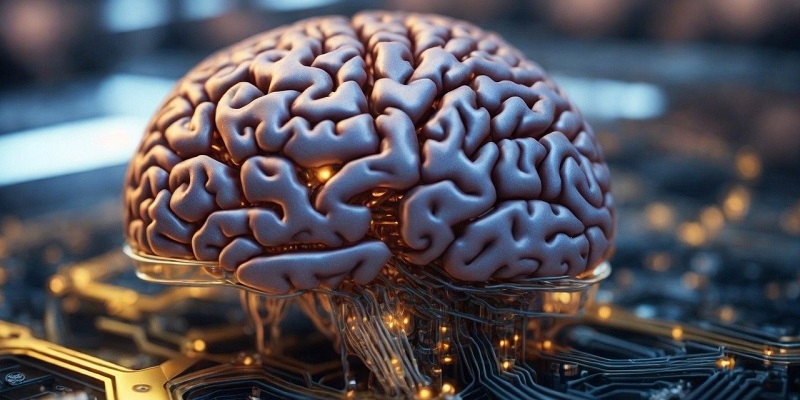Title: Unlocking the Large language models (LLMs) have revolutionized the field of natural language processing. These models, such as OpenAI’s GPT-3, have shown immense potential in various applications, including text generation, translation, and question answering. However, alongside their vast capabilities, LLMs also come with significant shortcomings that limit their effectiveness in real-world scenarios.
Limitations of LLMs as a Plug-and-Play Solution for Business Processes
Despite their impressive capabilities, LLMs cannot simply be plugged into existing business processes. Implementing LLMs requires careful consideration and customization to align with specific use cases. Integration challenges can arise due to differences in data formats, domain-specific terminologies, and the need for fine-tuning to ensure accurate outputs. Therefore, businesses must be cautious when adopting LLMs and approach their implementation with a clear strategy.
Challenges Associated with LLMs
While LLMs offer remarkable results, they are prone to generating content that can be factually incorrect or misleading. This is known as hallucination, where the models generate outputs that are creatively plausible but not based on factual information. Overcoming hallucination is a critical challenge in effectively leveraging LLMs. Furthermore, training and scaling LLMs consumes significant computational resources and time, making them expensive to develop and maintain. Additionally, LLMs lack transparency, making it difficult to perform audits or explain their decisions. This lack of explainability poses hurdles in adopting LLMs in regulated industries or critical applications where accountability is vital.
The role of knowledge graphs in enhancing LLMs
To address the limitations and challenges of LLMs, knowledge graphs play a crucial role. A knowledge graph is an information-rich structure that provides a comprehensive view of entities and their intricate relationships. By organizing data into a graph-like structure, knowledge graphs offer a foundation for contextual understanding and semantic connections.
Understanding Knowledge Graphs
Knowledge graphs represent entities as nodes and their relationships as edges, forming an interconnected web of information. This structured representation enables LLMs to have a broader awareness of the context and semantics behind the data they analyze. With knowledge graphs, LLMs can acquire a deep understanding of entities, their attributes, and their relationships, leading to more accurate and contextualized outputs.
How Knowledge Graphs Improve LLMs and AI Performance
Integrating knowledge graphs with LLMs enhances their performance in multiple ways. Firstly, knowledge graphs provide a rich source of additional information that can guide LLMs in generating more relevant and accurate responses. The contextual relationship between entities aids in filtering out hallucinations and ensures that the output aligns with existing knowledge.
Moreover, by leveraging knowledge graphs, LLMs become more transparent and explainable. The structured nature of the graphs allows for easier analysis of the decision-making process, facilitating audits and providing explanations for the generated outputs. This transparency instills trust in the models and enables their safe deployment, particularly in regulated industries.
Four Emerging Patterns of Using Knowledge Graphs with LLMs
To fully harness the power of knowledge graphs, four emerging patterns have emerged for effective use with LLMs:
Creation: Knowledge graphs are constructed by aggregating data from various sources, such as databases, structured documents, and web pages. Building accurate and comprehensive knowledge graphs serves as a foundation for improving the performance of LLMs.
Training: By incorporating knowledge graphs during the training phase, LLMs can learn to understand the relationships between entities more effectively. This leads to the production of more contextually appropriate and accurate responses.
Enrichment: Knowledge graphs constantly evolve and grow as new information becomes available. This dynamic enrichment enables LLMs to stay up-to-date with the latest knowledge, improving their accuracy and relevance.
Improving AI Models: Knowledge graphs offer insights into the limitations and biases of LLMs, allowing for targeted improvements and mitigating potential ethical concerns. The patterns identified within knowledge graphs can guide the development of more robust and reliable LLMs.
Benefits for Knowledge Workers in Utilizing Generative AI and Natural Language Queries
Knowledge workers can benefit immensely from the integration of LLMs with knowledge graphs. Generative AI enables them to execute natural language queries more efficiently, extracting relevant information from vast knowledge bases. By leveraging the power of knowledge graphs, knowledge workers can focus on more pertinent tasks, empowering them to make better-informed decisions.
Basecamp Research Using Generative AI to Map Earth’s Biodiversity and Support Nature-Based Solutions
Basecamp Research, a prominent environmental organization, has harnessed the potential of generative AI trained on knowledge graphs to map Earth’s biodiversity and support nature-based solutions. By leveraging knowledge graphs, their models can understand the intricate relationships between species, habitats, and ecological processes. This enables them to generate valuable insights and provide actionable recommendations to effectively conserve biodiversity.
Global Publisher Using Generative AI Trained on Knowledge Graphs to Make Complex Academic Content More Accessible and Understandable
A leading global publisher has embraced the power of generative AI trained on knowledge graphs to simplify and enhance complex academic content. By structuring knowledge through knowledge graphs, they can provide contextual explanations and make the content more accessible to diverse audiences. This application of LLMs with knowledge graphs ensures that complex concepts are conveyed in a manner that promotes better understanding and knowledge dissemination.
While large language models have immense potential, their limitations must be addressed to ensure effective and responsible deployment. Knowledge graphs serve as a powerful tool in enhancing LLMs, enabling accurate, transparent, and explainable AI models. By embracing the integration of knowledge graphs and LLMs, businesses and knowledge workers can unlock new horizons of innovation and understanding in the realm of natural language processing.

